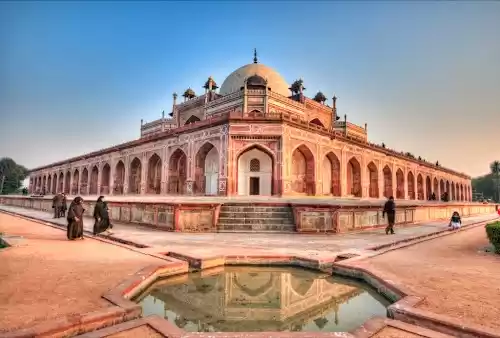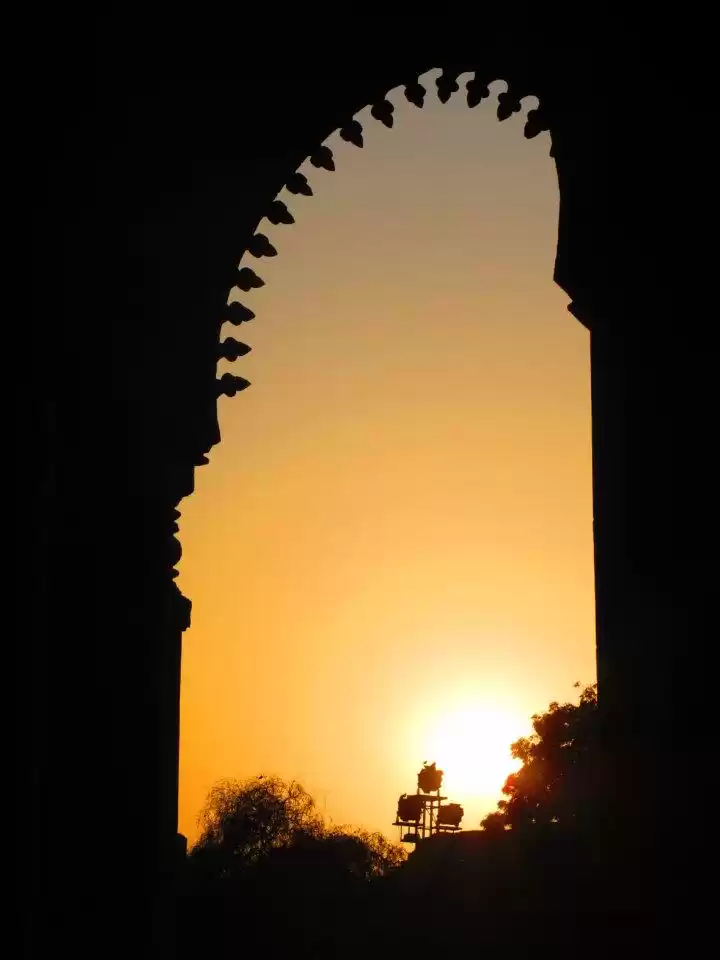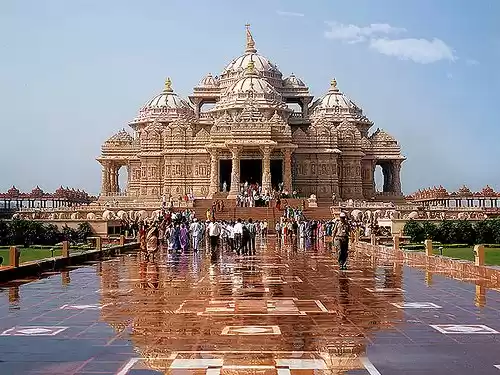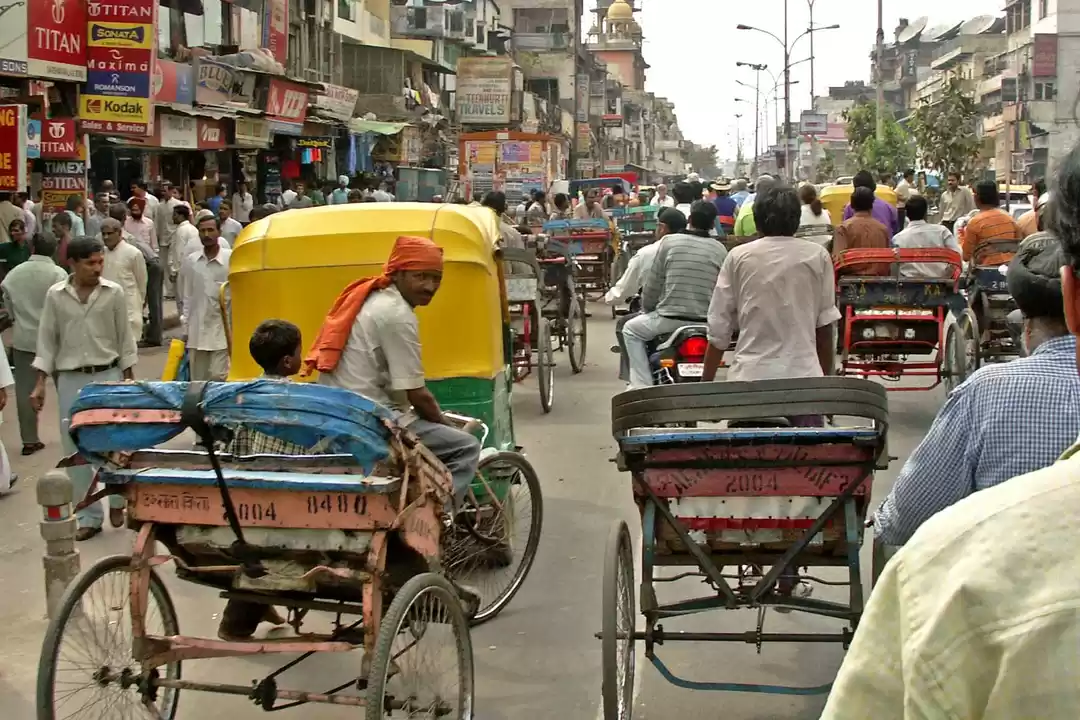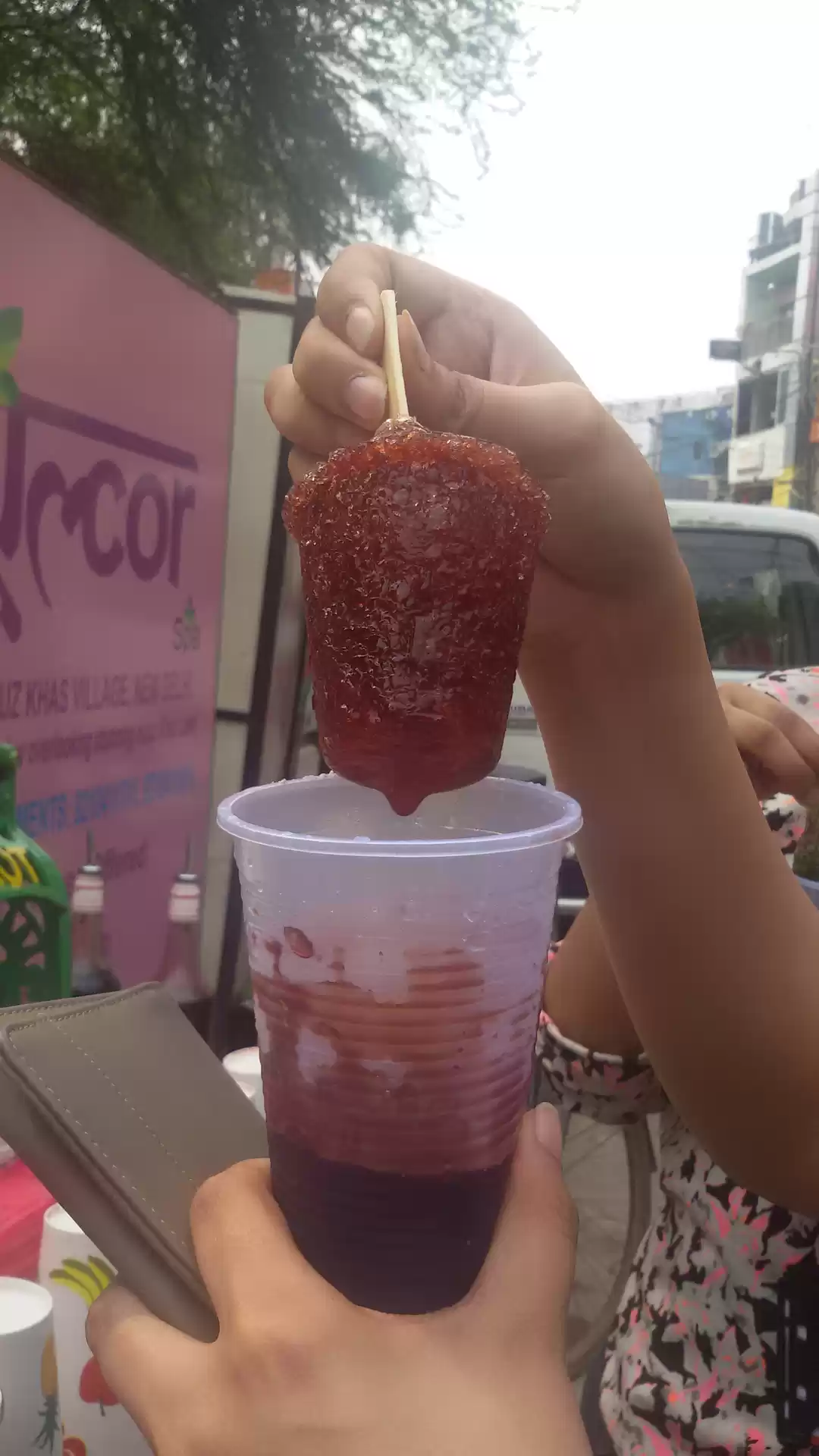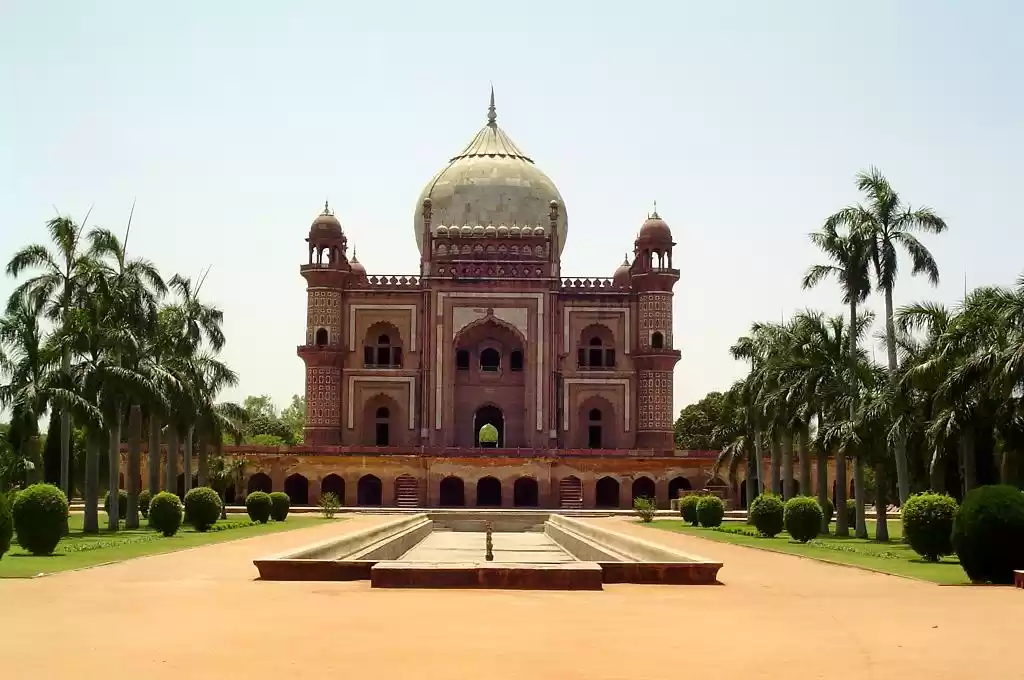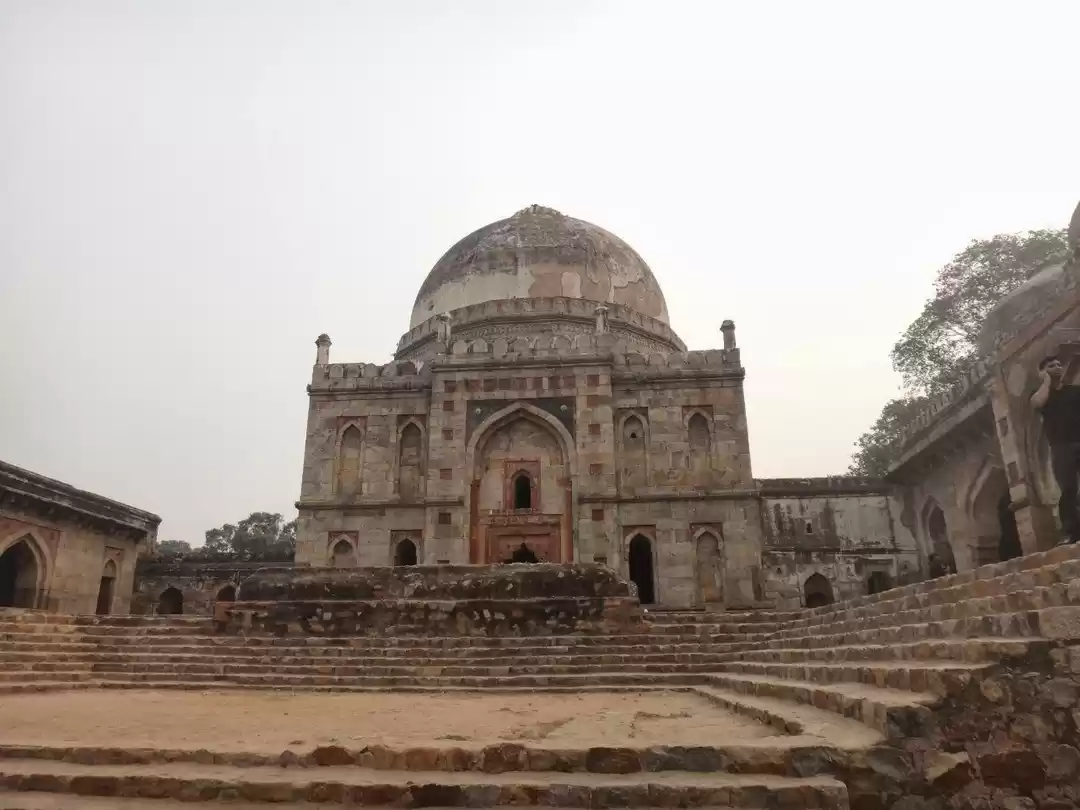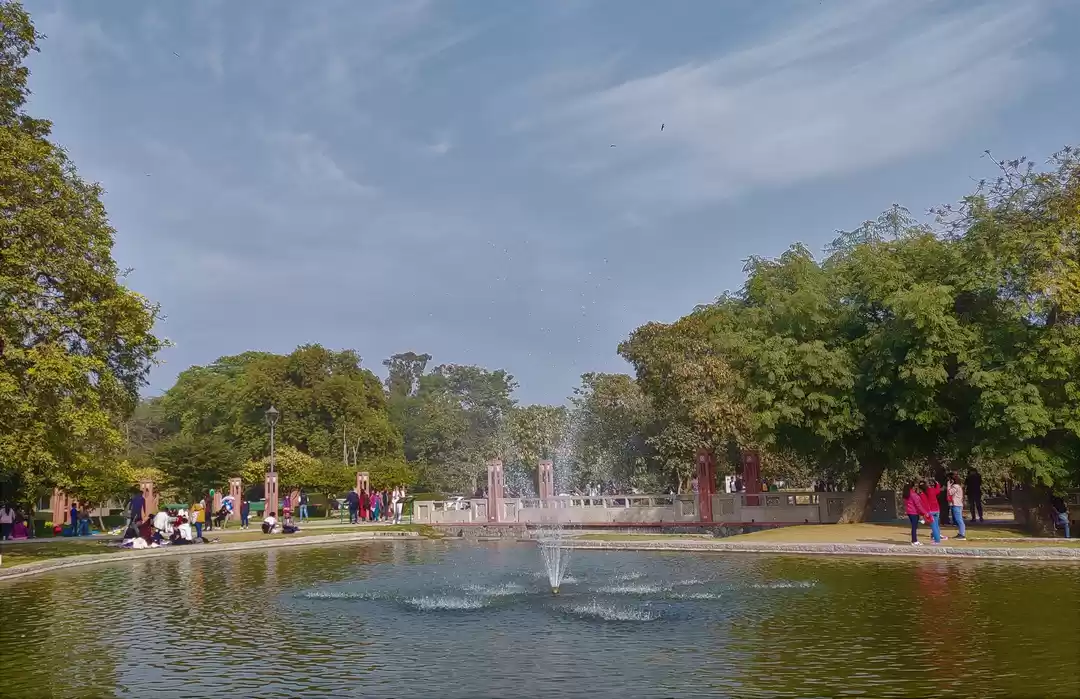Sunder Nursery is a heritage park in Delhi that is often overlooked by tourists and locals alike. But if you are looking for a place that offers a unique blend of history, culture, and nature, then Sunder Nursery is the perfect destination for you. Sunder Nursery is not just a nursery, but a sprawling complex that houses several monuments, gardens, microhabitats, and cultural and recreational activities.
It is also a UNESCO World Heritage Site, along with the nearby Humayun’s Tomb and Nizamuddin Basti. In this article, we will take you through the history and transformation of Sunder Nursery, the monuments and gardens of Sunder Nursery, the biodiversity and microhabitats of Sunder Nursery, and the cultural and recreational activities at Sunder Nursery. We will also give you some tips and recommendations on how to visit and enjoy Sunder Nursery and its features.
The History and Transformation of Sunder Nursery
Sunder Nursery was originally established in the 16th century by the Mughals as a royal garden and a burial ground for their nobles. The name Sunder comes from the Sanskrit word sundara, meaning beautiful. The nursery was later used by the British as a place to grow and experiment with various plants and trees. After India’s independence, the nursery was neglected and abandoned, and its monuments and gardens were in a state of decay and ruin.

However, in 2007, a massive restoration and revitalization project was initiated by the Aga Khan Trust for Culture (AKTC) in collaboration with the Archaeological Survey of India (ASI), the Central Public Works Department (CPWD), and the South Delhi Municipal Corporation (SDMC). The project aimed to conserve and restore the monuments and gardens of Sunder Nursery, as well as to create a public park that showcases the rich heritage and biodiversity of the site. The project was completed in 2018, and Sunder Nursery was opened to the public as a heritage park that spans over 90 acres and hosts 15 monuments, 20 gardens, and 300 species of flora and fauna.
The Monuments and Gardens of Sunder Nursery
Sunder Nursery is home to 15 monuments that date back to the Mughal era, some of which are over 500 years old. These monuments include tombs, mosques, pavilions, fountains, and lakes, each with its own architectural and aesthetic style and significance. Some of the most notable monuments are:

Sunder Burj: A 16th-century octagonal tomb that features intricate plasterwork and tilework. It is one of the earliest examples of the Mughal garden tomb, which later inspired the Taj Mahal.
Sunderwala Mahal: A 16th-century tomb that was originally built for an unknown noble, but later used as a residence by a British official. It has a simple and elegant design, with arched openings and a dome.

Lakkarwala Burj: A 16th-century tomb that was built for a timber merchant. It has a distinctive conical dome and a hexagonal plan, with carved stone panels and medallions.
Mirza Muzaffar Hussain’s Tomb: A 17th-century tomb that was built for a Mughal noble who was related to Emperor Aurangzeb. It has a square plan and a double dome, with floral motifs and calligraphy.
Chota Batashewala Mahal: A 17th-century tomb that was built for a Mughal prince who died young. It has a rectangular plan and a single dome, with red sandstone and white marble inlay.
Sunder Nursery also boasts of 20 gardens that showcase the diversity and beauty of nature. These gardens include:
Heritage Garden: A garden that surrounds the monuments and recreates the Mughal charbagh (four-part garden) design, with geometric patterns, water channels, and fountains.
Bonsai Garden: A garden that displays over 80 varieties of bonsai plants, some of which are over 100 years old. The garden also has a Japanese-style pavilion and a pond.
Rose Garden: A garden that features over 30 varieties of roses, ranging from hybrid teas to floribundas. The garden also has a pergola and a gazebo.

Lotus Garden: A garden that showcases the lotus, the national flower of India, in different colors and sizes. The garden also has a lotus-shaped fountain and a bridge.
Herb Garden: A garden that grows over 50 types of medicinal and aromatic herbs, such as mint, basil, lavender, and rosemary. The garden also has a sculpture of a snake, symbolizing the ancient art of healing.
The Biodiversity and Microhabitats of Sunder Nursery
Sunder Nursery is not only a heritage park, but also a biodiversity park that hosts over 300 species of flora and fauna. These include over 80 species of birds, 36 species of butterflies, 10 species of reptiles, and 2 species of amphibians. Some of the rare and endangered species that can be spotted in Sunder Nursery are:

Indian Pitta: A colorful and elusive bird that migrates to India during the summer. It has a distinctive call that sounds like “pitt-pitt”.
Indian Paradise Flycatcher: A graceful and elegant bird that has a long and white tail. It feeds on insects and flies in a swift and agile manner.
Red Pierrot: A small and attractive butterfly that has a black and white pattern with red spots. It is often seen on the flowers of the Kalanchoe plant.
Common Leopard: A large and striking butterfly that has a yellow and black pattern with blue spots. It is one of the most common butterflies in India.
Indian Rock Python: A non-venomous and powerful snake that can grow up to 6 meters long. It feeds on rodents, birds, and small mammals, and can swallow them whole.
Indian Flapshell Turtle: A freshwater turtle that has a flat and flexible shell that can close tightly. It feeds on aquatic plants, insects, and fish, and can survive in dry conditions by burying itself in mud.
Sunder Nursery also has several microhabitats that provide a suitable environment for different species of flora and fauna. These include:

Nursery: A nursery that grows and propagates various plants and trees, some of which are native and rare. The nursery also serves as an educational and research center for botany and horticulture.
Arboretum: An arboretum that displays over 280 types of trees, some of which are exotic and ornamental. The arboretum also has a walkway and a viewing tower that offer a panoramic view of the park and the city.
Bird Habitats: Several bird habitats that attract and support different kinds of birds, such as wetlands, woodlands, grasslands, and orchards. The bird habitats also have bird hides and feeders that allow visitors to observe and photograph the birds.
Butterfly Garden: A butterfly garden that cultivates and nurtures different kinds of butterflies, such as nectar plants, host plants, and puddling areas. The butterfly garden also has a butterfly house and a butterfly museum that display live and preserved specimens of butterflies.
How to Visit and Enjoy Sunder Nursery
If you are planning to visit and enjoy Sunder Nursery, here are some tips and recommendations for you:

Timings and Tickets:
Sunder Nursery is open from 7 am to 7 pm every day, except on Mondays. The entry fee is Rs. 35 for Indians and Rs. 500 for foreigners. You can also buy an annual pass for Rs. 1,000, which gives you unlimited access to the park and its events. You can buy the tickets online or at the gate.
Getting There:
Sunder Nursery is located near Humayun’s Tomb and Nizamuddin Railway Station, and is easily accessible by public transport. You can take the metro to JLN Stadium or Jor Bagh stations, and then take an auto-rickshaw or a cycle-rickshaw to the park. You can also take a bus to Nizamuddin Bus Stand, and then walk for about 15 minutes to the park. Alternatively, you can drive or take a cab to the park, but parking space is limited and may be crowded on weekends and holidays.
What to Carry:
Sunder Nursery is a large and spacious park, so you may want to carry some essentials with you, such as water, snacks, sunscreen, hat, sunglasses, camera, binoculars, etc. However, please note that plastic bottles and bags are not allowed inside the park, and you will have to deposit them at the entrance. You can also buy water and snacks at the park, but they may be expensive and limited in variety. You can also carry a picnic basket and enjoy a meal at the designated picnic spots, but please make sure to clean up after yourself and dispose of the waste properly.
What to Wear:
Sunder Nursery is a heritage and biodiversity park, so you may want to wear comfortable and modest clothes and shoes that are suitable for walking and exploring. You may also want to avoid wearing bright and flashy colors that may disturb the wildlife or attract unwanted attention. You may also want to respect the religious and cultural sentiments of the monuments and the nearby Nizamuddin Basti, and avoid wearing anything that may be considered offensive or inappropriate.
What to Do:
Sunder Nursery has a lot to offer to visitors of all ages and interests, so you may want to plan your visit according to your preferences and priorities. You can explore the monuments and gardens of Sunder Nursery, and learn more about their history and significance. You can also observe and appreciate the biodiversity and microhabitats of Sunder Nursery, and discover the various flora and fauna that inhabit the park. You can also participate and enjoy the cultural and recreational activities and events at Sunder Nursery, and experience the culture and heritage of the park and its surroundings. You can also relax and unwind at the picnic spots and enjoy the beauty and tranquility of the park.
The Cultural and Recreational Activities at Sunder Nursery
Sunder Nursery is not just a heritage and biodiversity park, but also a cultural and recreational park that offers a variety of activities and events for visitors of all ages and interests. These include:

Festivals: Several festivals that celebrate and showcase the culture and heritage of Sunder Nursery and its surroundings, such as the Basant Festival, the Heritage Festival, the Biodiversity Festival, and the Mela Festival. These festivals feature music, dance, art, crafts, food, and games.
Concerts: Several concerts that feature and promote the music and talent of Sunder Nursery and its surroundings, such as the Qawwali Concert, the Sufi Concert, the Classical Concert, and the Folk Concert. These concerts are held at the amphitheater or the monuments of Sunder Nursery.
Exhibitions: Several exhibitions that display and educate the visitors about the history and conservation of Sunder Nursery and its monuments, such as the Heritage Exhibition, the Biodiversity Exhibition, the Restoration Exhibition, and the Photography Exhibition. These exhibitions are held at the visitor center or the pavilions of Sunder Nursery.
Workshops: Several workshops that teach and train the visitors about the skills and crafts of Sunder Nursery and its surroundings, such as the Pottery Workshop, the Gardening Workshop, the Painting Workshop, and the Calligraphy Workshop. These workshops are held at the craft center or the gardens of Sunder Nursery.
Picnics: Several picnic spots that provide a relaxing and enjoyable experience for the visitors, such as the lawns, the meadows, the terraces, and the pavilions of Sunder Nursery. These picnic spots are equipped with benches, tables, umbrellas, and trash bins.
Sunder Nursery is a hidden gem of Delhi’s heritage and nature that offers a unique and enriching experience for visitors. Whether you are interested in history, culture, or nature, Sunder Nursery has something for everyone.
You can explore its monuments, gardens, biodiversity, and activities, and learn more about its history and conservation. You can also enjoy its beauty and tranquility, and escape from the hustle and bustle of the city.






















